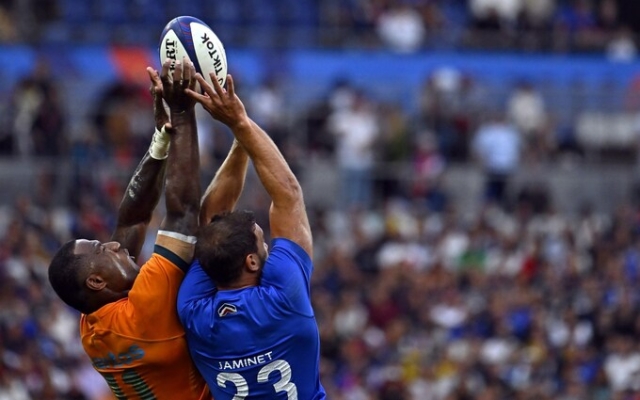 Attacking kicks will play a key role in the Rugby World Cup. Photo: Aurélien Meunier/Getty Images
Attacking kicks will play a key role in the Rugby World Cup. Photo: Aurélien Meunier/Getty Images
The invention of the bicycle is extremely rare. in rugby union. More often than not, tactical tricks are simply the repetition of out-of-fashion ones. In any case, these trends tend to be noticeable when they cycle through.
Here are five things to look out for in the World Cup.
Attacking games using an extra player
This is not just empty rhetoric from coaches emphasizing the importance of adapting to chaos. The frequency of cards in Test matches is increasing and these incidents will determine World Cup matches. In 2015, there were no red cards in 83 matches involving a «Tier One» team (defined as the Six Nations, Rugby Championship and Japan teams). Already in 2023, there were 10 red cards and 41 yellow cards in 43 matches. Last year there were 88 yellows and 12 reds in 68 matches.
Number of test cards involving 'tier one' nation | Opta
dataAnd compared to the current World Cup cycle, there is a noticeable increase:
Comparison of cards by World Cup cycles
With strict control of head-to-head contact, this leads to more time as teams are understaffed, increasing the value of cohesive action in contingencies. We now easily link this contingency planning to the receiving side of the card. Do they sacrifice a defender if, for example, they send off an attacker? How do they cover the back of the field if the flank or defender is ordered to march? Although in the case of injuries, not misconduct, Ireland held a master class in adaptation against Scotland during the Six Nations, with Sian Healy fighting prostitution and Josh van der Flier throwing the ball into the corridors.
But in short-term fights, reducing the number of opponents to 14 is a brilliant opportunity that should be seized. And because maps are so common, teams need to have carefully crafted tactics based on the position their opponents are missing. France hinted at this during their recent warm-up win over Australia.
Suliasi Vuniwalu received a yellow card from Luke Pierce in the 53rd minute:
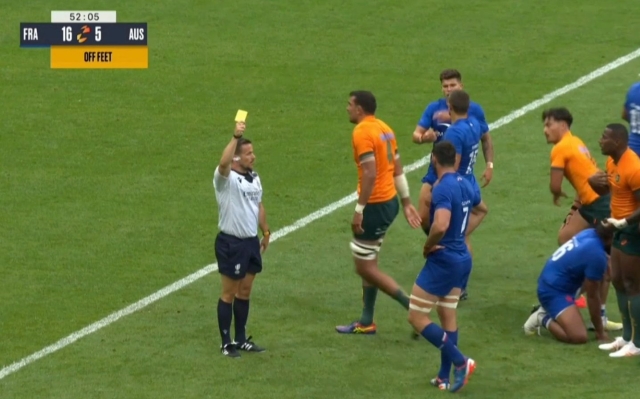
The hosts remained calm, resisted any urge to take a corner and took points:

This started a restart that was the perfect platform to explore the Wallaby's loose right flank. Though Ramos passed to the first receiver and was lucky he didn't miss the pass…
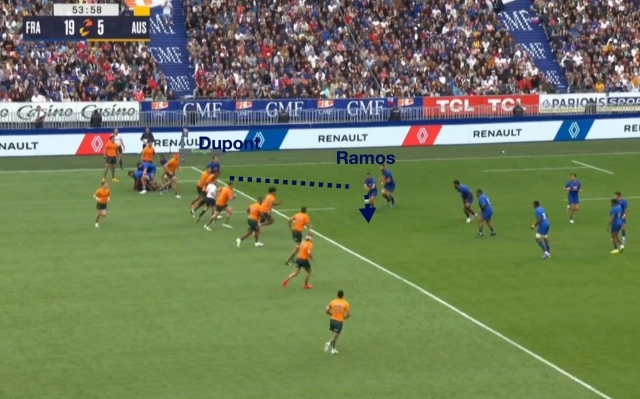
… Antoine Dupont made sure to find this place right on the stage later. The scrum half usually gets far out of these situations as territorial dominance is such a big part of France's game plan but scans the Wallaby's backfield…
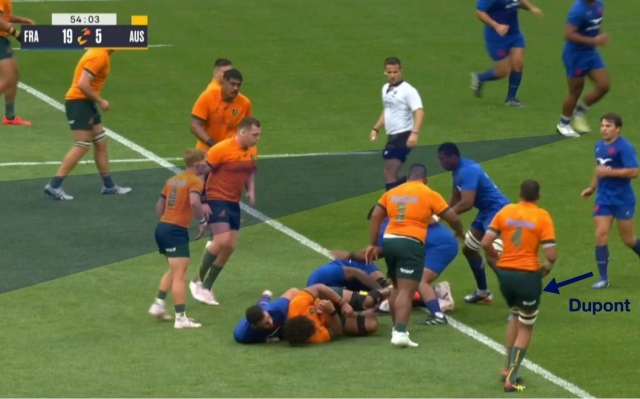
… delivers a left foot kick from the crossfield towards Gabin Villiers.
Villiers' throw to the top of the field, encouraged by Gael Ficu, represents an attempt to cause havoc in the depleted back defence:
France crossed the field
Some time later, France scored a goal, giving them the opportunity to restart the ball once again. This time they managed to pass the ball through their hands towards Wuniwal's flank:
Going through the French flank
This also highlights another trend — the use of restarts to launch large-scale attacks. Italy will certainly attract attention in this regard in the coming weeks. More pertinently, it demonstrates how France has changed course and adapted its approach to the weaknesses of the Wallabies.
In a similar fashion, although not breaking the mold, South Africa knocked the All Blacks out of the woods after Scott Barrett was sacked, even as Ian Foster replaced Luke Jacobson with Tupou Waai to ensure New Zealand had two special locks.
Card emergencies are often viewed as damage-limiting exercises. It is equally important that the team still has 15 players dealing as much damage as possible.
More bench for the «bombers»
History is written by the winners, and a six-versus-two split between the forwards on the bench was a key moment in South Africa's triumph at the 2019 World Cup. The key to this ruse, which gave Russi Erasmus the opportunity to revitalize his flock with the self-proclaimed «Bomber Squad,» was François Stein's versatility.
Stein, who retired in July, covered midfield inside center. and the No. 23 defender. This resourcefulness has reduced the risk inherent in the six-two strategy, which could be ineffective due to injuries to the back line.
Ahead of a resounding win over New Zealand on August 25, the Springboks suffered a setback when Willy le Roux retired from the same jersey at number 23. Rather than reinstate another defender, Jacques Ninaber brought in Quagga Smith to put together a seven-one split. At the beginning of the second period, he brought all seven attackers onto the field at once.
SA Bomb team plus
Much later, Nienaber replaced Makazol Mapimpi with Kobus Reinach. The last, one of four scrum half-backs in a squad of 33, appears to be a fallback.
Reinach Wing
After that, Ninaber talked about how adaptable, athletic forwards can be the backbone of a six-two or seven-one formation. We remind you of Sia Kolisi, his captain, coach from South Africa, known to Sekou Makalu, French hybrid flanker.
Quagga Smith is a veteran of the sevens, and therefore he has qualities that can be relied upon, namely speed. , comfort in open spaces — is it worth it to ask him to earn extra money on the back line. Eddie Jones, who once named Ben Earl as a possible hybrid player, has a designated «useful» category on his Australian national team. Jones believes that Josh Kemeny can jump between the back line and the back three.
Another trend increasing the likelihood of having six or two benches is the increasing popularity of teams fielding a 10-15 combination of two capable midfielders. In this cycle, New Zealand continues to play with Richie Mounga and Boden Barrett, while Blair Kinghorn and Finn Russell have now moved to Scotland. Gregor Townsend especially used the six-two game in the warm-up in France. George Horn and Ollie Smith were the two substitute guards.
Thomas Ramos has appeared in the France squad and Damian Willems looks set to be the perfect successor to François Stein as assistant to the Springboks. As for England, their attack looks more lively with Marcus Smith at full-back. In turn, this gives them the opportunity to increase the workload on the forwards, especially with Joe Marchant and Elliot Daly covering the center and flank.
Weather has been a historical factor in bench selection, with wet weather more likely to push teams into a six-on-two split. And timing is everything. As one experienced coach told Telegraph Sport: «It is necessary to make changes as early as possible, otherwise there is no point in it.»
The return of the «right cancer»
Perhaps there won't be a resurgence of the old-school break game, which resulted in tackling players being smashed by spikes if they had the courage to lie on the wrong side of the ball. However, the jackalers will have to be careful in this World Cup. This penalty after England's loss to Ireland highlights that. Ben Earle is the man to watch as Harry Ringrose prepares to arc James Low behind Hugo Keenan: p>Ireland breaks through the near side of Mack Hansen, who is pinned down by a scrambling Jamie George. Earl attacks but England gets a penalty because George didn't roll. Here Keenan cleverly buys a penalty while tripping over an England prostitute:
Ben Earle's penalty
Paul Williams, the referee, explains: «You [Earl] are fine, you [George] made a difference in the cleanup.» ”:
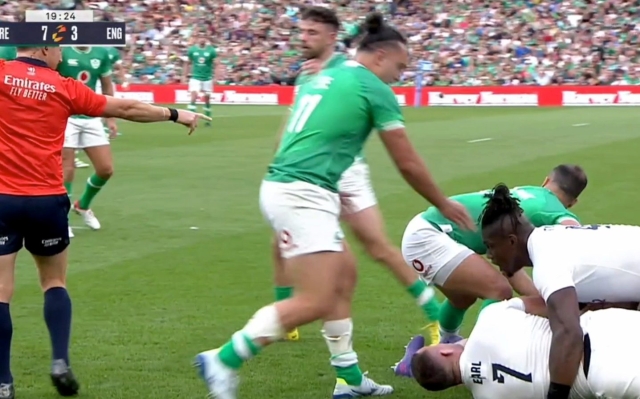
Referees are also likely to be strict about shackulers who put their hands outside the ball before scratching it back. This is a welcome development and the best have begun to adapt. It looks like more defensive teams are asking the tackler to jump up and hit the ruck while the rest of the team is reorganizing.
Here's another example from the same Dublin game. Calan Doris is a man worth watching George Ford feed Theo Dan:
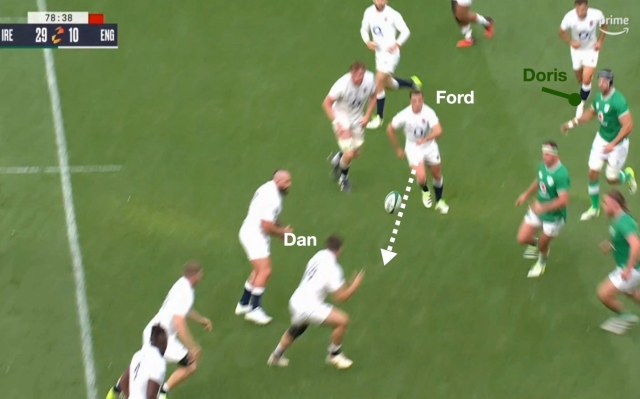
The break comes and Keenan ends up fighting Dan. Watch Doris. He dives over the tackle zone and then charges back into it, displacing Jack Willis and forcing Joe Marler to fumble the ball. Doris may have been lucky that he didn't concede a penalty from hitting the ball, although the first part of his breaking work is great. Tacklers don't often get the chance to jack the ball either, but they can drive over the ball instead of diving towards it:
Doris ruins
Since attack speed is critical, stalls are vital and attacking teams are out of the box as well. Sometimes when carriers are delayed in a grapple, you'll see support players fighting the grappler or even a teammate to end the melee. Often this looks right on the brink of being penalized for side entry. As always, breakthrough battles will be full of cheating.
Wide and narrow strikes in the phase game
The attacking tendencies that have defined this four-year cycle are sure to be visible during the World Cup. We can expect fake mauls, inside centers doing round robins in the first phase from the first receiver and wandering wings, with midfielders and defenders holding the width when these three defenders enter the field.
There will be swings. , a layered phase form exemplified by Italy's recent attempt against Japan. Watch Paolo Garbisi disappear behind Michele Lamaro and get a pass from Iganico Brex before pulling away:
Ireland have developed their methods and Scotland are another team that will be hungry for width, but close quarters play will be exciting. Under the tutelage of Joe Schmidt, New Zealand have perfected their narrow attack and perhaps something is brewing with Australia as well.
While the All Blacks suffered a crushing defeat to the All Blacks at the Melbourne cricket ground, Wallaby showed brilliant results. template that may come in handy later. Australia is endowed with dynamic and strong athletes and should try to capitalize on those strengths.
Check out striker Mark Navaganitawase here. He hides around the stone, looking for a weak spot. Aaron Smith, the New Zealand scrum half, often finds himself at the front line of defense. This allows All Blacks to keep the width even if Smith never sends the operator back:
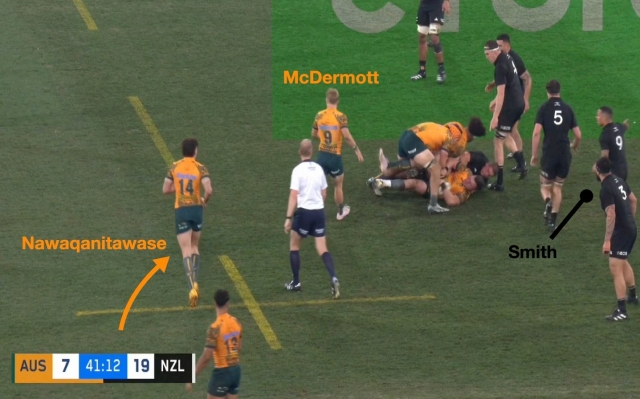
In the next leg, Tate McDermott, the Wallaby's scrum half, picks up the ball and turns around to find Nawaganitawase. McDermott is almost walking on water, out of the game, knowing that Nawaganitawase can speed up by going through Smith:
Nawaganitawase is a carry
Two phases later, when McDermott is done, Angus Bell feeds Taniela Tupou:
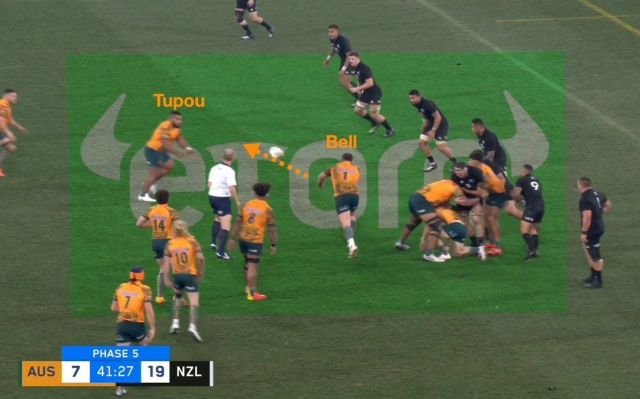
Rob Valetini then turns off the power on his scrum half's shoulder, overpowering Brodie Retallick and reaching the 22 boundary. By then, Tupou is up again on his feet and can move on:
Valentini and Tupou carry
This direct approach is reminiscent of how France initiates momentum before breaking through the defenses in a flurry of unloading. Fiji will try to do the same. Although it may look quite primitive, carry pick and go and roaming wingers like Navaganitawase and Marika Koroibete can add size and create a lot of problems.
The winners of this world championship will have a versatile attack , with energetic phase play is a basic requirement.
Kicking quirks
This shot, taken after South Africa's victory over Wales, shows the value of a modest kick from the box and why it won't be completely obsolete, at least for a while. .
In the first game after Wales left winger Rio Dier hit the basket, Jayden Hendrix takes to the air and returns the ball through Kanana Moody. Suddenly the game is interrupted and the Springboks may rebel:
In this case, Moody is able to outrun the Welsh players in pursuit and jump for the ball. Often, however, «chaperon runners» block players chasing the kick.
Lately, more and more teams have been hitting from the fly midfield rather than the scrum-semi-final in an attempt to create aerial competition. New Zealand did a master class in this regard with their win over the Springboks in Auckland.
This ploy eliminates the runners from the equation and isolates the backfield defender on the open flank. It also negates the skill of a defender like Freddie Steward, as Wales did in Cardiff in early August after a fake free-kick:
— Charlie Morgan (@CharlieFelix) August 8, 2023
Fast kicks from the half of the scrum seem to be a relatively new trend. Aaron Smith hit boxing hard against South Africa in Auckland in July, then did the same when New Zealand faced the Springboks again in Twickenham:
Surprise hit on New Zealand boxing
Australia scored two runs against France with a similar strategy, first chasing Nawaganitawase and then following a heads-up between Vuniwalu and Melvin Jaminet:
With the element of surprise rather than the methodical crawler signaling the team's intent, there's probably a better chance of a head-to-head competition in the air. The speed of thought and action will be decisive in this World Cup.

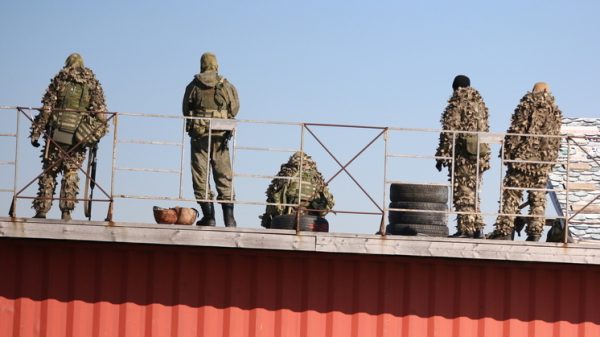








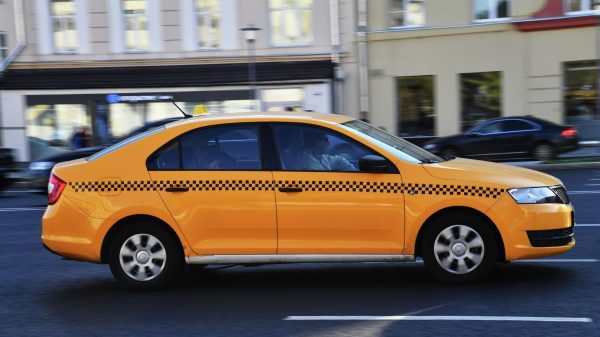












































Свежие комментарии